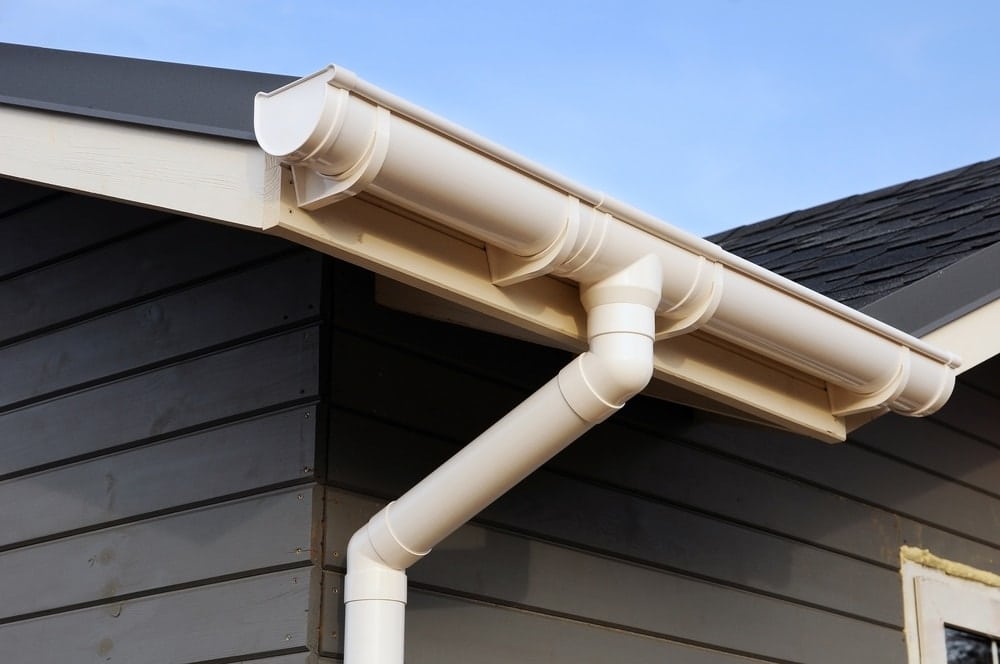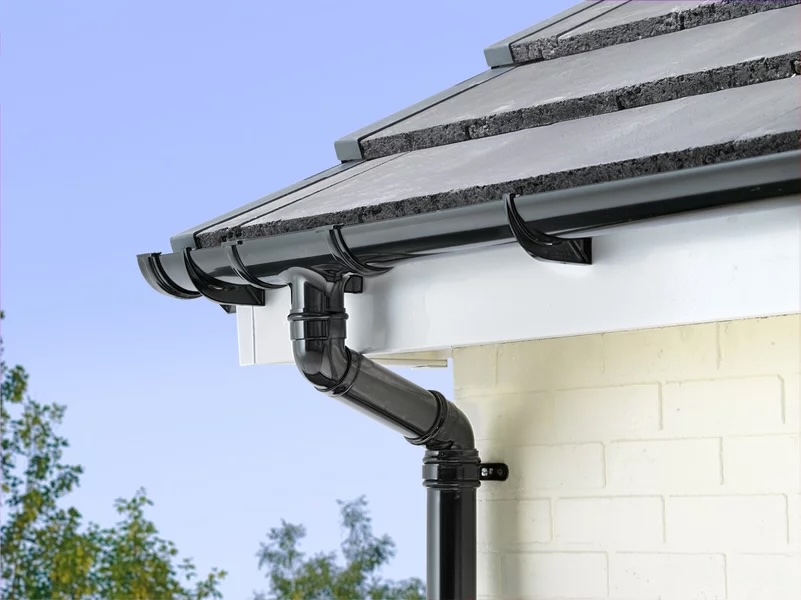Guide To Replace Gutter Downpipe: The Intermediate Guide In Replace Gu…
페이지 정보
작성자 H** 댓글 0건 조회 143 회 작성일 24-12-26 09:01본문
 How to replace gutter downpipe (click through the up coming website page) a Gutter Downpipe
How to replace gutter downpipe (click through the up coming website page) a Gutter Downpipe guttering and downpipe replacement is a crucial element of your home's drainage system. It assists in directing rainwater away from the foundations of your home to stop water damage.
guttering and downpipe replacement is a crucial element of your home's drainage system. It assists in directing rainwater away from the foundations of your home to stop water damage.Making sure you are keeping up with maintenance and cleaning will help prevent gutter leaks and blockages. This means regularly applying sealant and evaluating options such as underground drainage and water butt connections.
Clean the gutters
Downpipes, also known as gutter pipes are a vital component of any drainage system. They are designed to efficiently transport rainwater from the roof to the ground. This helps prevent water damage to the building's foundation or the landscaping around it. It is important to choose the correct downpipe to ensure the best performance. Regular maintenance will ensure they are in good condition.
Clogged gutters are a serious issue that can cause flooding, rotted wood, basement leaks and more. If you see water running through your walkways, or notice stains on your house your gutters might be blocked. Regular maintenance and cleaning will stop this from occurring.
If you own a metal downpipe, it's important to ensure that the surface is coated with an oil-based paint that is waterproof. This will help keep the surface from rust, and it will also appear great. Examine the brackets of your gutters, and re-align them that have moved over time. The most suitable material for the downpipe is a metallic like galvanised or aluminium steel, which provides strength and durability for your local climate. Plastic downpipes are another alternative, however they can become brittle over time.
The most common cause of leaks from a downpipe is due to damage to the joint where a gutter joins with another. This can be due to corrosion or a loose joint. If the joint is damaged, it needs to be cleaned before being sealed with a top-quality sealant such as LePage QUAD Max Window Doors, Door and Siding Sealant.
If the joint is loose it can be repaired with silicone caulk. In more severe instances, it might be necessary for the joint be replaced. Another common spot for leaks from a downpipe is the end cap, which should be sealed to stop water escaping. Many home improvement stores stock these and can be installed by pressing. It is a good idea to purchase one for each of your gutters to ensure that the joints are fully waterproof and protected from leaks.
Repair the Leak
Downpipes (also called gutter drain pipes) are an important component of drainage systems, carrying rainwater from a building's roof down to the ground. They are constructed of durable materials that are able to endure the elements and come in different sizes to suit any building.
If you notice that your downpipes are leaking, you should perform some maintenance to make sure they're working properly. This could include looking at the brackets to determine whether they've shifted, as well as searching for holes or cracks. You may also want to consider replacing the downpipe in case it's corroded or damaged.
The debris in the guttering downpipes can cause water to overflow. This can cause erosion of the landscape around your property as and damage to windows and doors. A clogged downpipe will also create extra pressure on the gutters, which can cause them to slide. It is possible to clear any obstruction in the drainpipe by running water through it. If this isn't working, you might need to dismantle the downpipe and then remove the clog by hand.
In time, downpipes could become loose or even separate from the gutters. Extreme temperatures can cause them to expand or contract. This can damage the seals and eventually cause leaks. You can repair cracks by using caulk in certain situations. In severe cases, it may be required to replace the entire downpipe.
You can purchase guttering pipes on the internet, but it is important to take your measurements to a reputable DIY store prior to you do so. This will ensure that you get the right size downpipe and gutter repairs and will avoid any unnecessary costs. It's a good idea to use caulk in conjunction with waterproof tape if you are making repairs yourself. This will give you a better hold and will prevent the issue from recurring.
Replace the damaged section
A thorough cleaning of your guttering is the best way to fix small leaks or cracks. However, in some cases, a section could be damaged beyond repair. In this case you'll need to replace the affected section. This can be done by taking the guttering off the fascia board, and then putting in the new gutter. This is easier if are able to work from the ground instead of the ladder. If the guttering is metal, you can apply a sealant for the roof or gutter to fill in the hole or crack. Clean any paint or rust from the surface. Clean the area surrounding the damaged section. Remove the backing paper from the length of repair tape that is a few cm longer than the guttering width. Wrap the repair tape over the joint and press it firmly to mold it into the desired shape. It's a great idea to overlap all seams when repairing the downpipe that is leaking. This will prevent water leaking down the back of the guttering and eventually into the home.
Before installing the new section of guttering and downpipe replacement services, make sure you have the appropriate tools and are able to work on the ladder. Take two ladders and enlist the help of a person you know if you can. You'll have to reach the downspout. Take off any gutter hangers installed and scrape away any corrosion or sealant. If you are using gutter slips to connect sections of guttering, drill them, and then drive nails or screws into them.
If you're using downspouts with drop outlets make a mark on the spot where it's going to be placed on the gutter using an object. Then, using a multi-tool, or hammer and chipper make into the marked area. Then, slide the downspout through the hole, then screw or hammer it into. Make sure that the guttering slopes by 1/8 inch per foot towards the downspout.
If your gutters are made from aluminum or steel, you can use a sheet metal crimper squeeze or "crimp" one end of each downspout's short length so that it fits into the elbows you've already installed. This will keep the downspouts and gutters from getting blocked by leaves and will also make them more resistant to corrosion.
Install the New Gutters
It's important to remove any obstructions from your gutters as fast as possible. To avoid accidents, you should always use extreme caution while working at high levels. Also, ensure that someone secure your ladder. If you can't get to the bottom of the drain it is possible to hire a flexible drain clearing rod.
Once you've cleared any clogs, the next step is to fix any leaks or cracks in the gutter. Fill the holes with a gutter sealant. This will stop water from entering and damaging the gutters or your home's foundation.
When installing new gutters, you must plan your project carefully and take measurements of the roofline. Also, ensure that you select the correct size and type of material for your roof and the rainfall intensity. Cut any branches that are hanging overhanging, which can block gutters from working properly.
It's important to follow the manufacturer's guidelines when installing gutters. You should also get help when installing gutters.
Install your gutters in the order that you will be installing them in. This will allow you to transfer them to your assistant. Fit the gutters onto the fascia brackets and then fix them to the wall using the supplied screws.
The use of aluminium downpipes is the most secure method of replacing your gutters because they don't face the same problems like plastic alternatives, such as water leaking and fading. If you're seeking an option that is easy to install and will last for a long time, check out our range of aluminium downpipes. They're available in a assortment of sizes and colours and styles, so you'll be able to find the perfect fit for your home. If you have any questions, contact us and we'll be happy to answer them. We're also happy to assist you with any repairs or maintenance that you might require for your gutters.
댓글목록
등록된 댓글이 없습니다.

